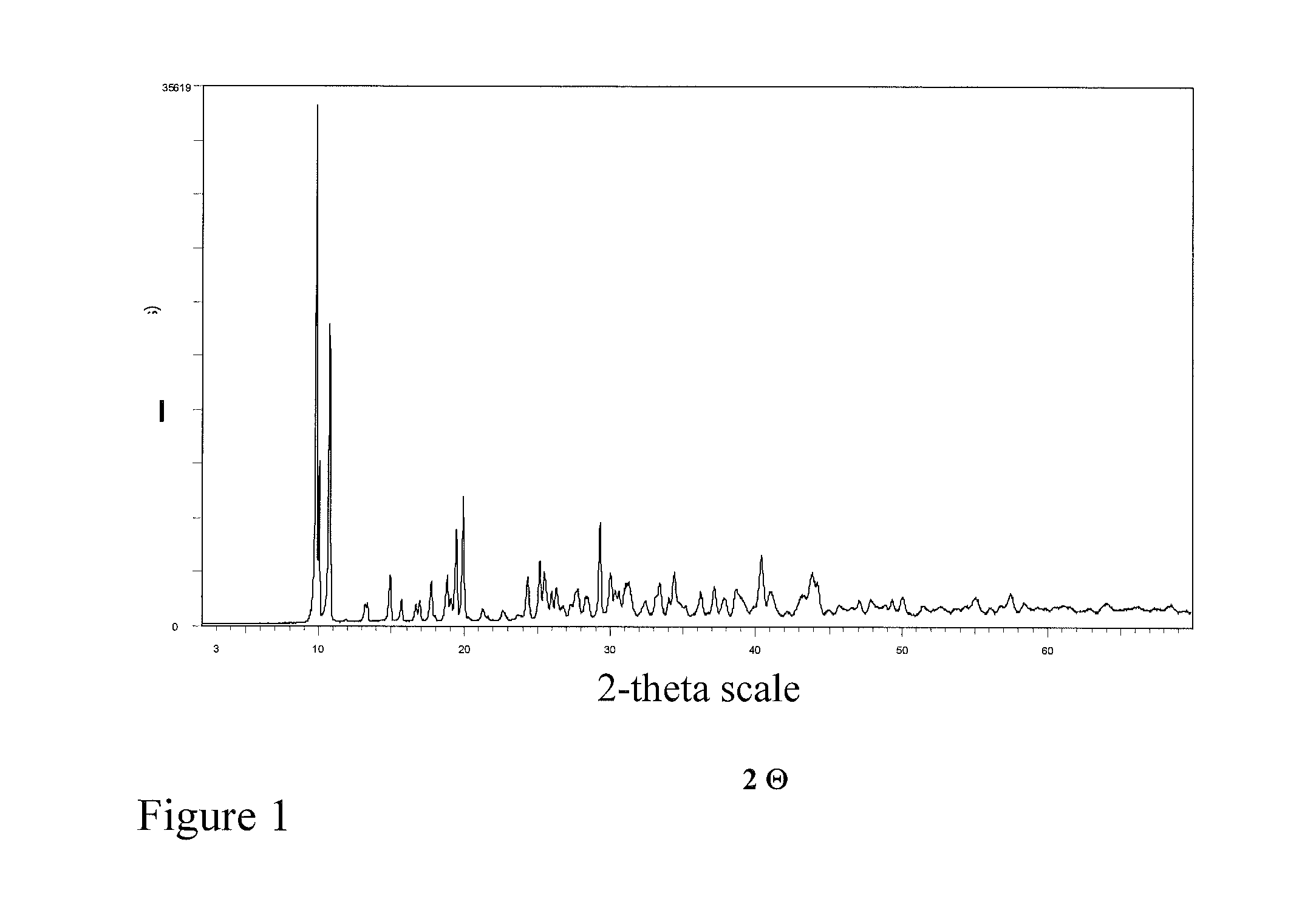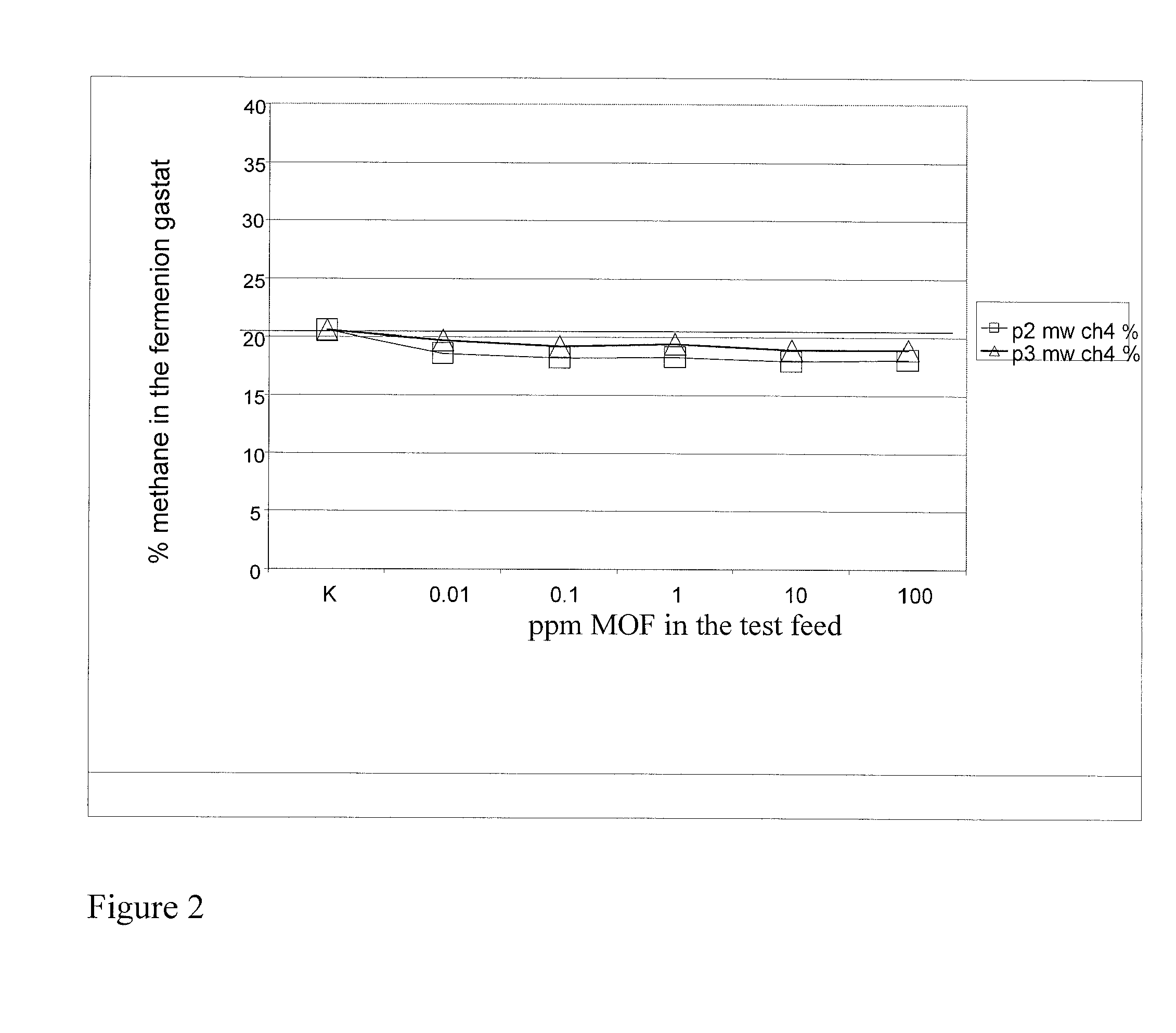Method of reducing the methane gas level and of increasing the total gas yield in animal feed
a technology of total gas yield and methane gas, which is applied in the field of reducing the methane gas level and increasing the total gas yield in animal feed, can solve the problems of adverse effects on crude fiber digestibility, not inconsiderable costs, and relatively short life span of methane in the atmosphere, so as to reduce the energy loss caused by methane production and improve the energy yield
- Summary
- Abstract
- Description
- Claims
- Application Information
AI Technical Summary
Benefits of technology
Problems solved by technology
Method used
Image
Examples
example 1
Preparation of a Metal-Organic Framework Material Comprising Magnesium Formate / Acetate
[0074]Batch:
1)Magnesium nitrate*6 H2O38.5mmol9.90g2)Formic acid53.2mmol2.5g3)Acetic acid53.2mmol3.2g4)N,N-Dimethylformamide (DMF)2.19mol160.0g
[0075]The magnesium nitrate is dissolved in DMF in an autoclave liner. A solution of the formic acid and acetic acid is added, and the solution is stirred for 10 minutes.
[0076]Crystallization:
[0077]125° C. / 78 h
[0078]Product Mixture:
[0079]Clear solution with white crystals. The solution has a pH of 6.67
[0080]Work-Up:
[0081]The crystals are filtered off and washed twice with 50 ml of DMF.
[0082]Weight: 4.763 g
[0083]Solids Content:
[0084]Weight: 2.7% of solid
[0085]FIG. 1 shows the XRD of the material obtained, with I denoting the intensity (Lin (counts)) and 2 Θ denoting the 2-theta scale.
example 2
Preparation of a Metal-Organic Framework Material Based on Magnesium Formate
[0086]
1)Magnesium nitrate*6 water38.5mmol9.90g2)Formic acid106.5mmol4.8g3)DMF2.19mol160.0g
[0087]The magnesium nitrate is dissolved in DMF in an autoclave liner. The formic acid is added and the solution is stirred for 10 minutes. (pH=3.49)
[0088]Crystallization:
[0089]125° C. / 78 h
[0090]Product Mixture:
[0091]Clear solution with white crystals
[0092]Work-Up:
[0093]The crystals are filtered off and washed twice with 50 ml of DMF.
[0094]Weight: 5.162 g
[0095]Solids Content:
[0096]Weight: 2.9% of solid
[0097]Hohenheim Feed Evaluation Test
[0098]The Hohenheim feeds evaluation test (HFT) is carried out as described in the methodological protocol of the VDLUFA (Methodenbuch volume III, chapter 25.1). By way of adaptation, the substrate weight is reduced to such an extent that a total of no more than 60 ml of gas are formed after an incubation time of 24 hours. Discharging the gas during incubation, as is usually done in the ...
PUM
| Property | Measurement | Unit |
|---|---|---|
| 2Θ | aaaaa | aaaaa |
| 2Θ | aaaaa | aaaaa |
| 2Θ | aaaaa | aaaaa |
Abstract
Description
Claims
Application Information
 Login to View More
Login to View More - R&D
- Intellectual Property
- Life Sciences
- Materials
- Tech Scout
- Unparalleled Data Quality
- Higher Quality Content
- 60% Fewer Hallucinations
Browse by: Latest US Patents, China's latest patents, Technical Efficacy Thesaurus, Application Domain, Technology Topic, Popular Technical Reports.
© 2025 PatSnap. All rights reserved.Legal|Privacy policy|Modern Slavery Act Transparency Statement|Sitemap|About US| Contact US: help@patsnap.com



